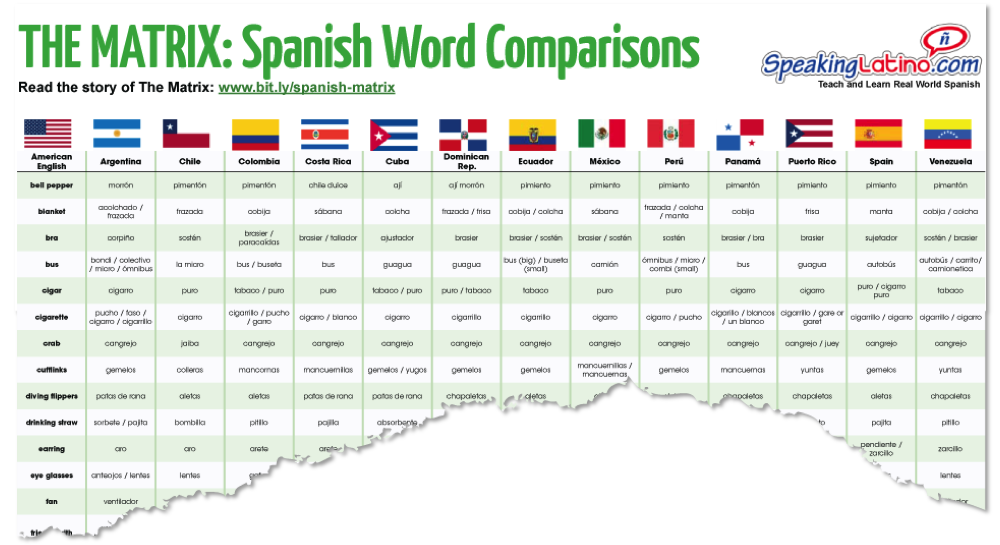The text for this post originally appeared at Mezzofanti Guild.
Thanks, Donovan, for the opportunity!
Examples of Latin American Spanish dialect differences
Here’s the thing about learning Spanish:
Most teachers lie to you from the first day.
Hola bursts through their lips. It may be implicit lying, but they have hidden the truth. And not the little-white-lie type of lie. It is a major, life-threatening kind of lie. You see, they claim they will teach you Spanish.
Oh, of course they tell partial truths.
“It will take time for you to learn…You may never speak like a native…verb conjugations are difficult…for native English speakers, masculine and feminine nouns will be tough.”
Partial truths are the best way to skillfully lie.
But they leave out the most important truth. The one real truth.
If you have already started learning Spanish, you may have even felt they were lying to you.
Did you ever ask how to say cake? Maybe when it was someone’s birthday in class? Maybe just because you can’t resist a chocolate cake and want to know how to order one for your first abroad visit “in country.”
Four simple letters to translate and even if the teacher answered, it was a lie.
Your teacher lied right to your face. Did they tell you that cake translated as bizcocho, queque, torta, pastel or some other word? Well, which was it?
And just when they answered, you felt something wrong. The teacher perhaps hesitated before answering or maybe even stammered “It depends, but generally you say…”
In that instant, you knew you were right. Something was wrong. They hid the real truth.
So here the matrix reveals the real truth.
All those words mean cake. Yep, every single one. It’s just that each means cake in a different Spanish-speaking country.
You got it. You bet.
Spanish is not one language with one translation from English to Spanish. It is several. The vocabulary changes so much, it may not be useful as you switch countries.
Don’t believe me? Let’s try again:
Popcorn. Well, there’s pochoclo, pororó, poscorn, palomitas, cabritas or canchita.
Take your pick.
Still can’t believe it?
Bus. Micro, colectivo, bondi, autobus, guagua.
Sandals. Playeras, chancletas, ojotas, chalas, sandalias, chanclas.
Drinking Straw. Pajita, sorbeto, sorbete, bombilla, popote.
It goes both ways:
Taco. The famous Mexican food, a woman’s high heel, traffic jam, a small square of paper, a pool stick.
Spanish changes from one country to the next
Step from Chile to Argentina and sure you will be understood.
Until you are not.
Lapiz pasta, volantín, corchetera: Pen, kite, stapler. All regular Chilean words.
All useless when you cross the border.
Puerto Rico to Mexico?
China, chiringa, mahón. An orange, kite, jeans. Useless in Mexico.
The truth is that Spanish changes so much from one country to another that some vocabulary and phrases you learned may not help.
One solution to this is to embrace The Matrix. The Matrix is alive. The Matrix never ends.

Check out these other English Spanish articles.

